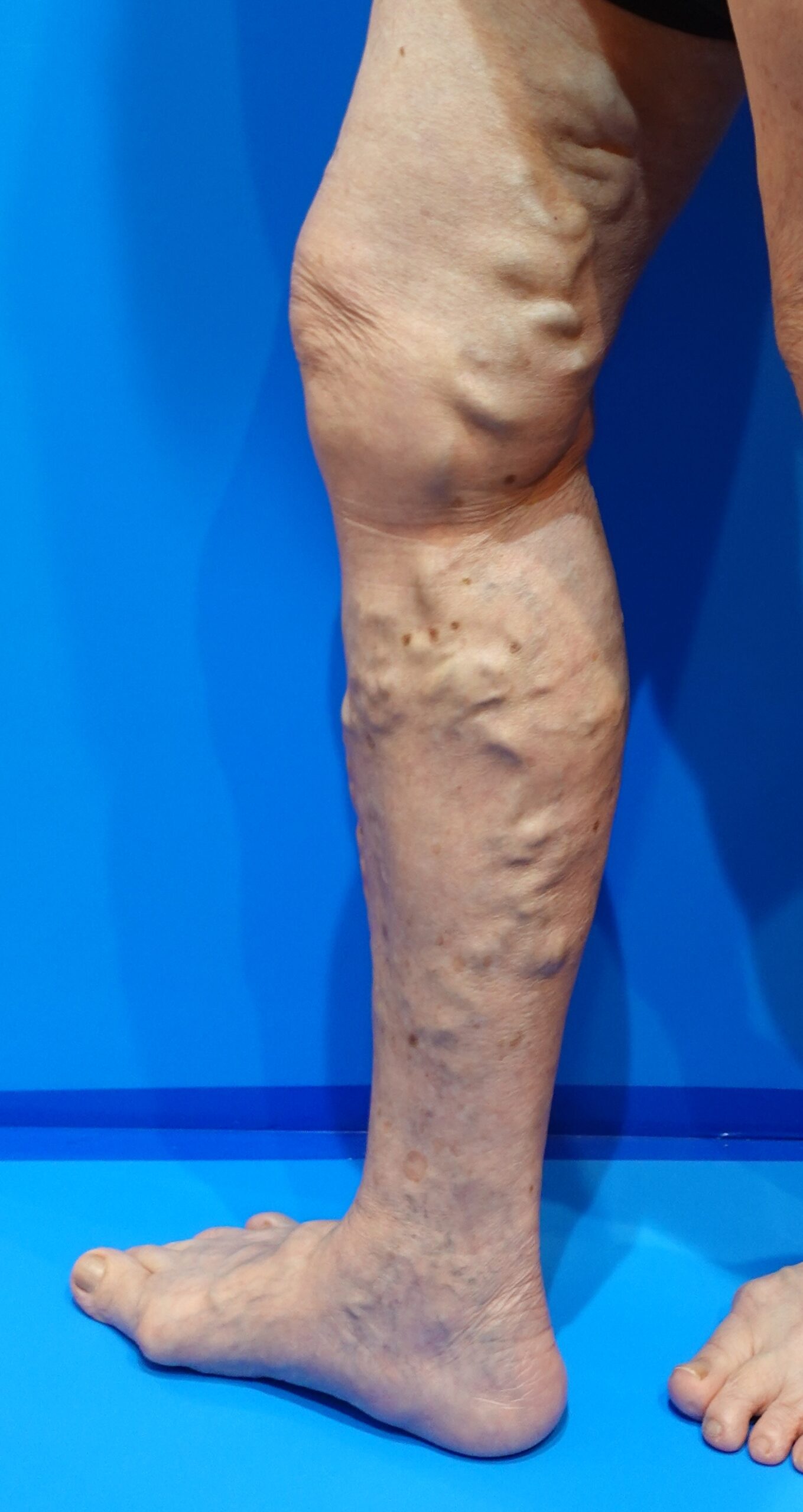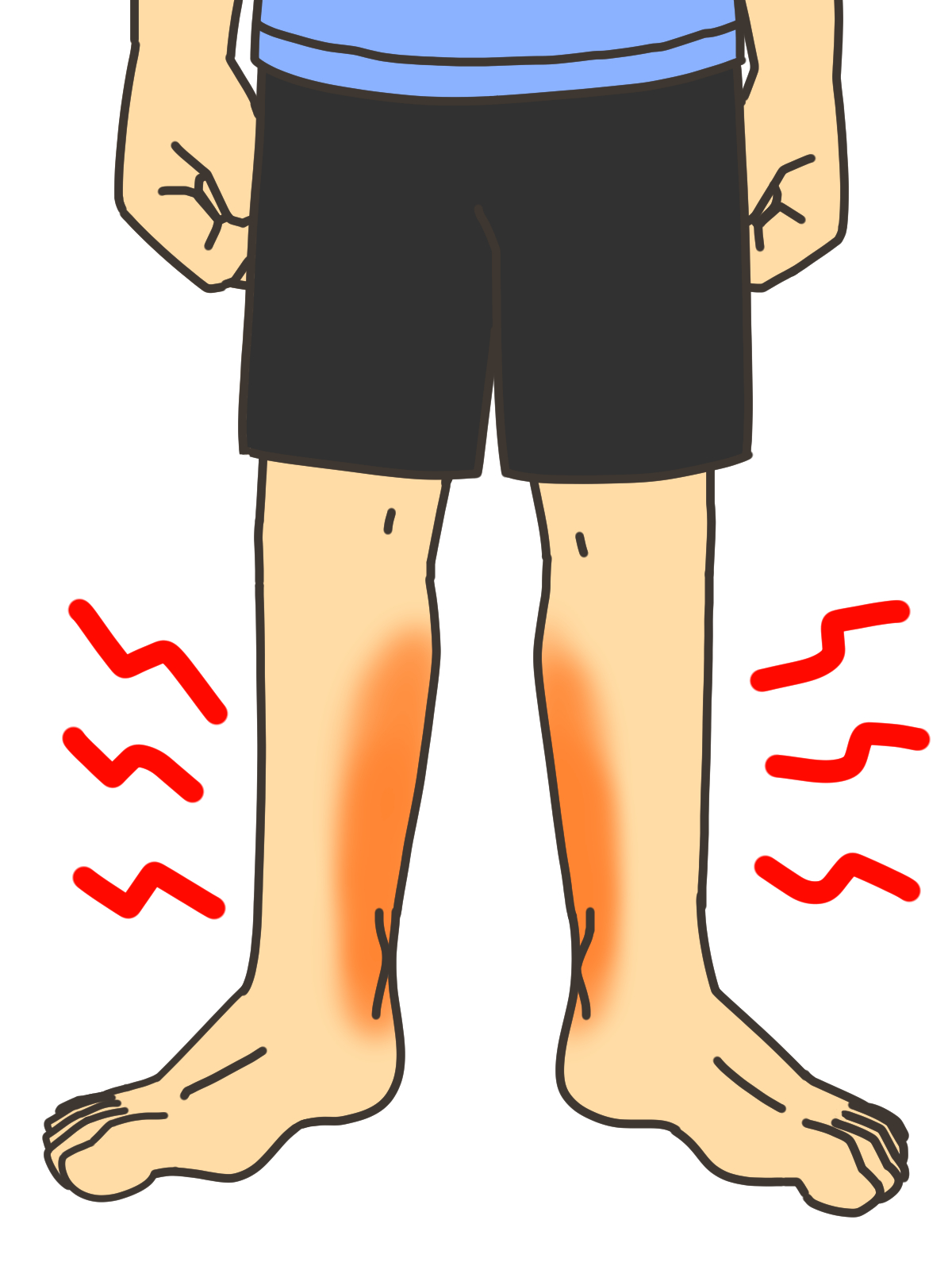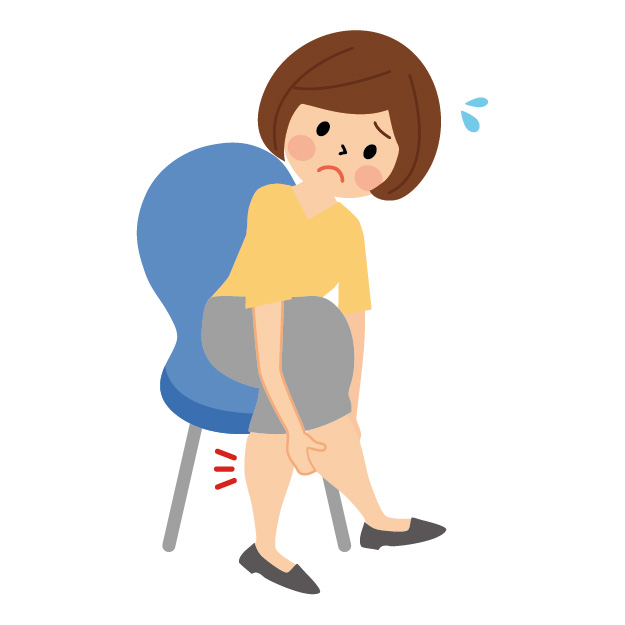The veins in your legs have become more twisted and visible, and fine capillaries have started to stand out, making it difficult to show your bare legs in public…
Do you have such concerns?
In this article, we explain the symptoms and treatments for different types of varicose veins in the legs.
What Are Varicose Veins?
Varicose veins are veins in the legs that have become enlarged, twisted, and visible. This condition, known as “varicose veins,” occurs when the veins in the legs become thickened, twisted, and prominent.
Types of Varicose Veins
There are four types of varicose veins.
- Saphenous Varicose Veins
- Branch Varicose Veins
- Reticular Varicose Veins
- Spider Veins
Saphenous Varicose Veins
In the veins of the legs, there are “superficial veins” that run through the subcutaneous fat layer just under the skin and “deep veins” that run through the muscles, deeper than the subcutaneous fat.
Superficial veins can be compared to trains running on the surface, while deep veins can be compared to subways running underground.
Varicose veins primarily occur in the “superficial veins,” which correspond to the trains running on the surface.
In general, veins that are more than 3 mm in diameter when standing are called “varicose veins.”
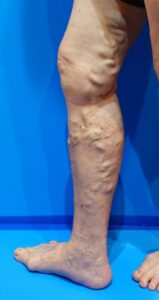
There are two main superficial veins: the “great saphenous vein” and the “small saphenous vein.”
Veins have an important mechanism to prevent blood from flowing downward due to gravity as they carry blood back to the heart.
This mechanism is the “venous valve.”
Venous valves act as doors that only open upwards, allowing blood to flow upwards but not back down.

Thanks to these venous valves, blood can flow upwards towards the heart.
However, if these venous valves fail to close properly, blood starts to leak through the gaps in the valves.
This is called venous reflux.
When the blood that has risen from the bottom meets the blood that is refluxing from the top, a blood traffic jam occurs.
This condition is referred to in medical terms as “venous stasis.”
When blood chronically stagnates inside the veins, the veins gradually stretch.
Think of a water balloon that has been left full of water for several days.

As the veins enlarge, the valves stretch and fail to close even more, causing more blood to reflux and the congestion to worsen.
This vicious cycle continues, causing the veins to become larger and more twisted.
In other words, saphenous varicose veins are varicose veins caused by the failure of the valves in the great or small saphenous veins to close properly, resulting in blood reflux.
This type of varicose vein is the most common.
Symptoms
Because the blood flowing through the veins contains many waste products, blood reflux due to saphenous varicose veins causes dirty blood to accumulate in the veins of the legs due to gravity.

As a result, symptoms such as heaviness and fatigue in the legs, prominent veins, leg cramps, and swelling may appear.
If varicose veins progress, symptoms such as eczema, itching, and discoloration of the skin (hyperpigmentation), known as “stasis dermatitis,” may appear.
In the worst case, skin ulcers may develop.

Need for Treatment
If there are no symptoms or stasis dermatitis, monitoring the condition may suffice.
For those with symptoms, surgery can help improve the condition.
If skin symptoms such as eczema, itching, hyperpigmentation, or skin ulcers (stasis dermatitis) are present, surgery is particularly necessary.
Treatment Methods
Compression Therapy
A simple treatment method is compression therapy, which involves wearing medical stockings known as “compression stockings.”
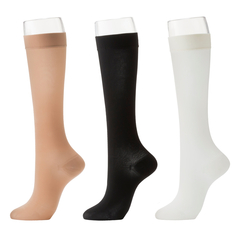
These stockings are knitted to provide the strongest compression at the ankle, gradually decreasing towards the calf.
This applies pressure to squeeze blood from the feet, helping to send the blood in the leg veins back to the heart.
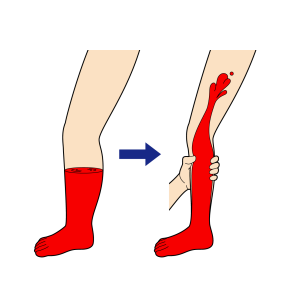
Wearing compression stockings can quickly relieve symptoms such as leg heaviness, swelling, and cramps.
However, they do not repair the veins where the valves have malfunctioned, so the symptoms will return as soon as the stockings are removed.
These compression stockings are stiffer than regular socks and require some practice to wear.
Endovenous Ablation
Currently, the standard treatment for saphenous varicose veins is endovenous ablation using a laser catheter or radiofrequency catheter.
The malfunctioning saphenous vein, which no longer has functioning valves, behaves like a leaky sewage pipe and only causes harm to the body.
Therefore, closing off the refluxing saphenous vein with heat from a laser or radiofrequency will stop the reflux.

Endovenous Glue Treatment
Recently, a treatment method using cyanoacrylate, the same substance as instant adhesive, has also become available to seal the veins and prevent blood reflux.
This treatment is known as “glue treatment.”

The traditional standard surgical method of stripping (vein removal surgery) is rarely performed nowadays.
The reason is that stripping surgery requires making an incision in the skin, causing significant damage to the body, and there are almost no saphenous varicose veins that cannot be treated with laser or radiofrequency.
Branch Varicose Veins
Branch varicose veins, as the name suggests, are “branched” varicose veins.
These are veins that have become thicker and twisted over time due to reflux from the great (small) saphenous vein.
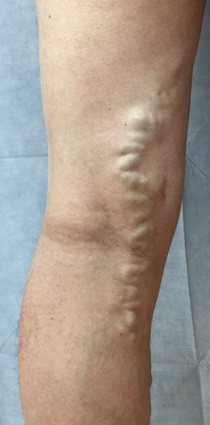
Symptoms
The symptoms are almost the same as those of saphenous varicose veins.
Difference Between Saphenous Varicose Veins and Branch Varicose Veins
Saphenous veins run through a space called the “saphenous compartment” between the fascia and fascia, so their expansion and twisting are not as severe. However, branch varicose veins, which branch off from the saphenous veins and mainly run through the subcutaneous fat layer, tend to be more severely enlarged and twisted.
Therefore, special wires used for catheter or stripping treatment often cannot be inserted.
Treatment Methods
Recently, improved laser catheters have made it possible to perform laser ablation on even twisted varicose veins without making an incision in the skin.
Since there is no need for an incision, there are no visible scars.
No post-operative rest is required as well.
For small varicose veins that cannot be treated with laser catheters, sclerotherapy, which involves injecting a sclerosing agent to close off the veins, is performed.
Spider Veins
Similar to reticular varicose veins, spider veins can appear as red or purple capillaries on the thighs, knees, or calves.
These are known as “spider veins.”
They are capillaries with a diameter of 0.1 to 1 mm running just below the skin in a layer called the dermis.
In English, they are called spider veins, and while they are named “veins,” they are technically “telangiectasias.”
They branch off from the superficial vein “lateral vein system” running behind the thigh and often grow like branches from reticular varicose veins, known as “feeder veins.”
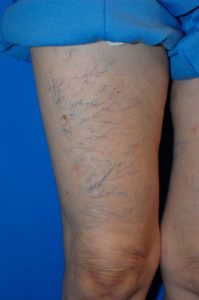
Causes
Spider veins differ in their cause from typical “varicose veins” that appear prominently in the legs.
While saphenous and branch varicose veins occur due to the failure of venous valves, leading to blood reflux, spider veins are caused by hormonal influences, genetics, thin skin, and increased venous pressure, causing capillaries to expand and twist.
They most commonly occur in women in their 20s to 30s or during pregnancy when female hormone secretion is at its peak, and do not necessarily increase with age.
Symptoms
Some people may experience a tingling or burning sensation in the area of spider veins, but generally, they are asymptomatic.
They are primarily a cosmetic issue.
Need for Treatment
If you do not mind the appearance, you can leave them untreated.
For those who are concerned about the appearance and wish for treatment, sclerotherapy is available under health insurance, and laser therapy is available as a private treatment.
Treatment Methods
Sclerotherapy
A sclerosing agent is injected into the veins to cause inflammation.
By compressing the veins with stockings or bandages for 48 hours, the veins close off and blood flow stops.
The closed veins gradually disappear over several months.
However, about 10-30% of people may experience hyperpigmentation in the treated area due to the inflammation caused by sclerotherapy.
This hyperpigmentation gradually fades over six months to a year.
Laser Therapy
Laser therapy involves directly applying laser beams to the skin.
The laser beams are absorbed by red-colored areas, making them suitable for treating red spider veins.
Laser therapy results in a better finish compared to sclerotherapy.
However, it is not covered by health insurance and must be paid for out-of-pocket.
Reticular Varicose Veins
Reticular varicose veins are typically found on the thighs, knees, and calves.
These are capillaries with a diameter of up to 2 mm and are usually blue in color.
They often communicate with spider veins and are sometimes referred to as “feeder veins.”
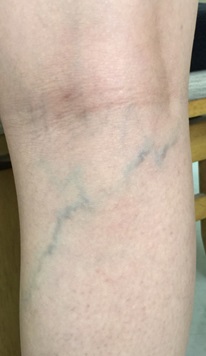
Symptoms
Like spider veins, reticular varicose veins typically have no specific symptoms.
Treatment Methods
Sclerotherapy
For those who are concerned about the appearance, sclerotherapy is suitable.
Laser therapy is not effective for blue veins as the laser light is not absorbed.
The Varicose Vein Clinic TOKYO is a specialized clinic for varicose veins. It has been ranked No.1 in Japan for the number of varicose vein laser surgeries performed for four consecutive years since 2020.


